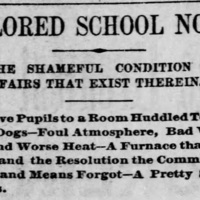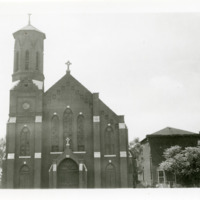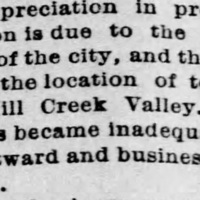Browse Exhibits (3 total)
Protest and Uplift

The residents of Mill Creek Valley deserved better than what the City of St. Louis and its government gave them. While the city stood by and watched the neighborhood decay, hungrily waiting on the sidelines to snap up prime real estate in the name of urban renewal, the African American inhabitants of the Mill Creek Valley neighborhood concentrated on raising themselves up.
Education offered the promise of a better life for themselves and their children. Though the colored schools of Mill Creek Valley faced numerous disadvantages that didn’t touch the white schools that dotted the city and county, like overcrowding and underfunding, Mill Creek Valley was able to offer a fine education at all levels.
Mill Creek also served as the city’s hub of civil rights advocacy. Here, black professionals like lawyers thrived, fighting to ensure the rights of their clients were respected in court. In addition, the community came together in large numbers again and again to call for better work and better pay.
Time and time again, the black citizens of Mill Creek Valley found ways to uplift themselves
Culture and Resistance

Through culture, whether music, art, or religion, the people of Mill Creek Valley made their neighborhood and their community bond together. By building spaces to create and foster culture, Mill Creek Valley became a place for people to come together, whether it was for church or performances. The culture of Mill Creek Valley has faced many challenges throughout the history of the neighborhood including its demolition. Mill Creek Valley has always found ways to persevere whether it is through housing Civil Rights organizations, creating a legacy that grew beyond the neighborhood, or buildings that continue to stand today. While the neighborhood is no longer there, the culture that was created there still lives on.
Community Organizations

The residents of Mill Creek Valley took ownership of the life and growth of their community as those with political and economic power turned their attention westward, towards the counties of St. Louis, and away from the neighborhoods in the heart of the city. The people of Mill Creek refused to let their home live up to the negative images painted by outside forces. Citizens invested their own time and resources into the wellbeing of their neighborhood by starting and continuously supporting numerous institutions that aimed to provide for the physical, emotional, and spiritual well-being of the townspeople of Mill Creek Valley. From religious organizations that helped fund youth programs to private hospitals for African-Americans and public services such as housing, the people of Mill Creek worked to provide for the betterment of their home, and the health of their neighborhood. The domineering will of the Mill Creek community shone through the dark, racialized stereotypes that surrounded it and worked tirelessly to support the individuals that made up the whole.